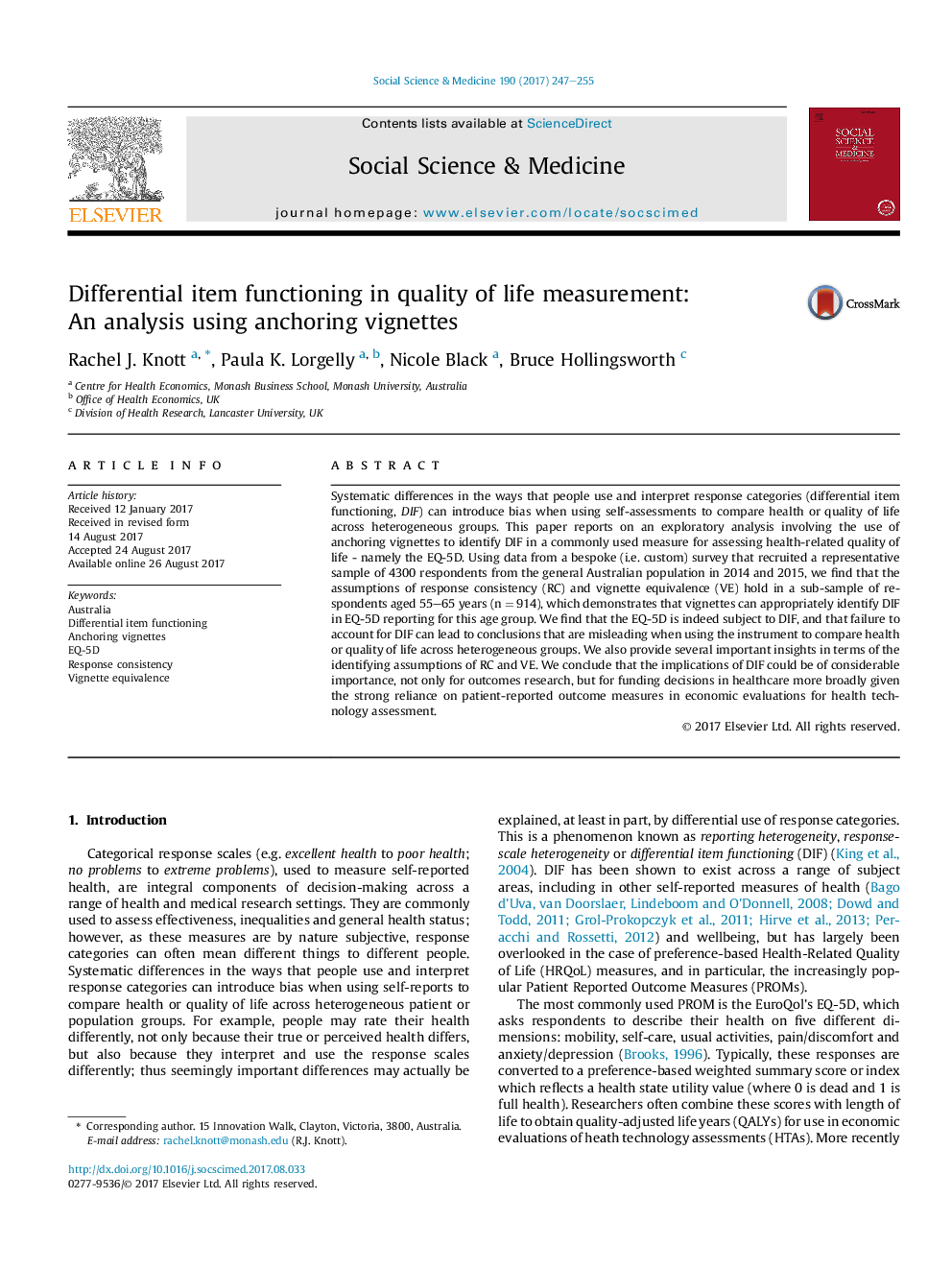| Article ID | Journal | Published Year | Pages | File Type |
|---|---|---|---|---|
| 5046339 | Social Science & Medicine | 2017 | 9 Pages |
â¢Anchoring vignettes can be used to detect differential item functioning (DIF) in the EQ-5D.â¢The EQ-5D is subject to DIF, which can lead to bias.â¢The EQ-5D should be used with caution when comparing health across heterogeneous groups.
Systematic differences in the ways that people use and interpret response categories (differential item functioning, DIF) can introduce bias when using self-assessments to compare health or quality of life across heterogeneous groups. This paper reports on an exploratory analysis involving the use of anchoring vignettes to identify DIF in a commonly used measure for assessing health-related quality of life - namely the EQ-5D. Using data from a bespoke (i.e. custom) survey that recruited a representative sample of 4300 respondents from the general Australian population in 2014 and 2015, we find that the assumptions of response consistency (RC) and vignette equivalence (VE) hold in a sub-sample of respondents aged 55-65 years (n = 914), which demonstrates that vignettes can appropriately identify DIF in EQ-5D reporting for this age group. We find that the EQ-5D is indeed subject to DIF, and that failure to account for DIF can lead to conclusions that are misleading when using the instrument to compare health or quality of life across heterogeneous groups. We also provide several important insights in terms of the identifying assumptions of RC and VE. We conclude that the implications of DIF could be of considerable importance, not only for outcomes research, but for funding decisions in healthcare more broadly given the strong reliance on patient-reported outcome measures in economic evaluations for health technology assessment.
